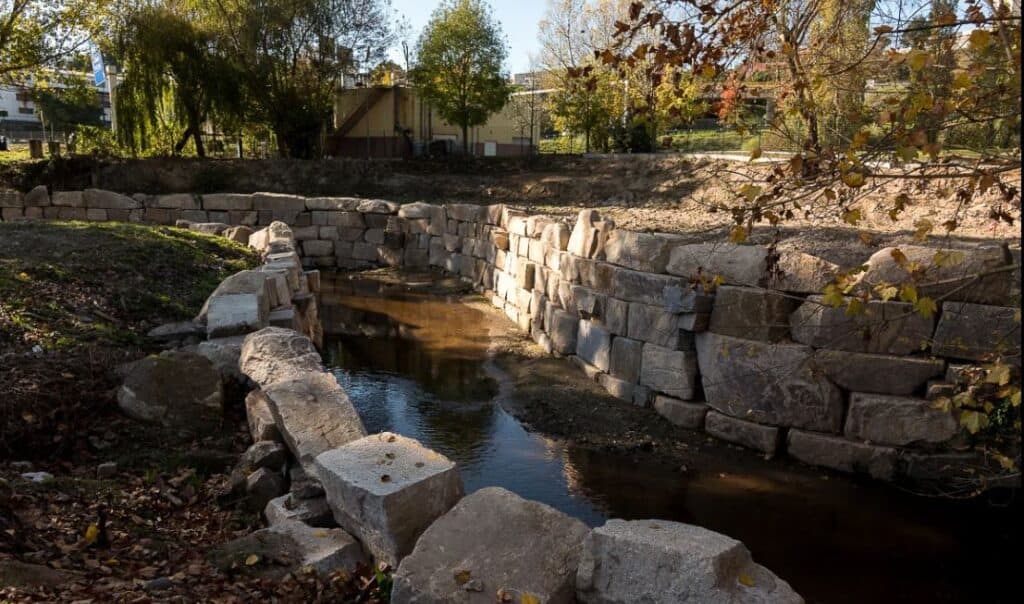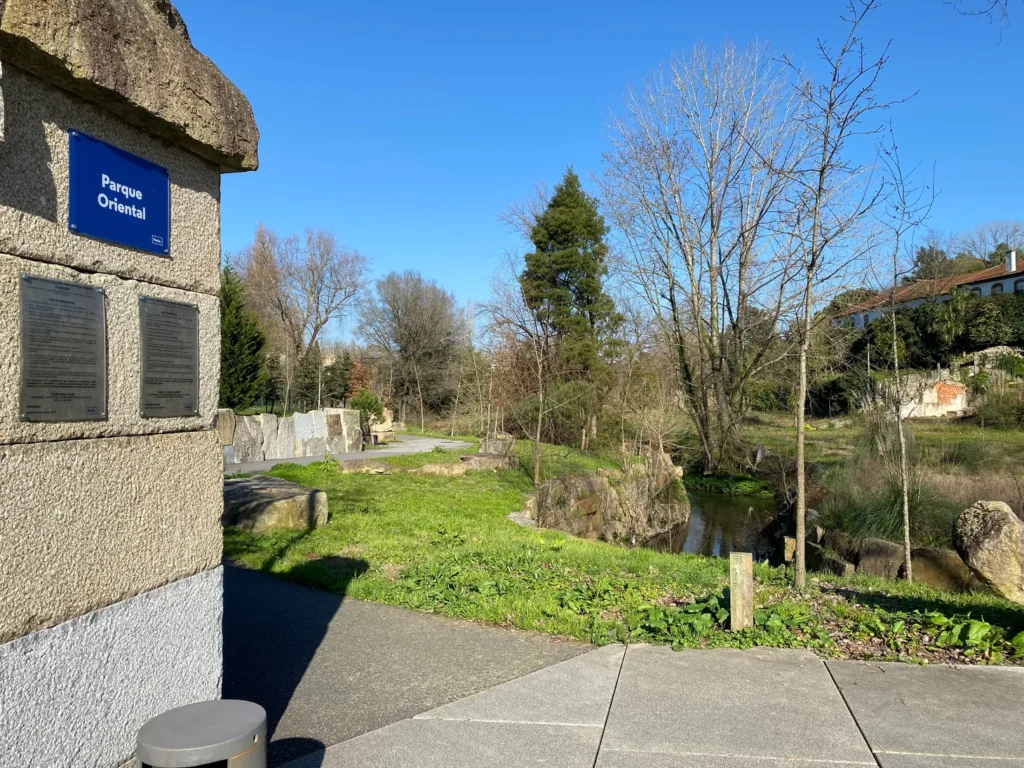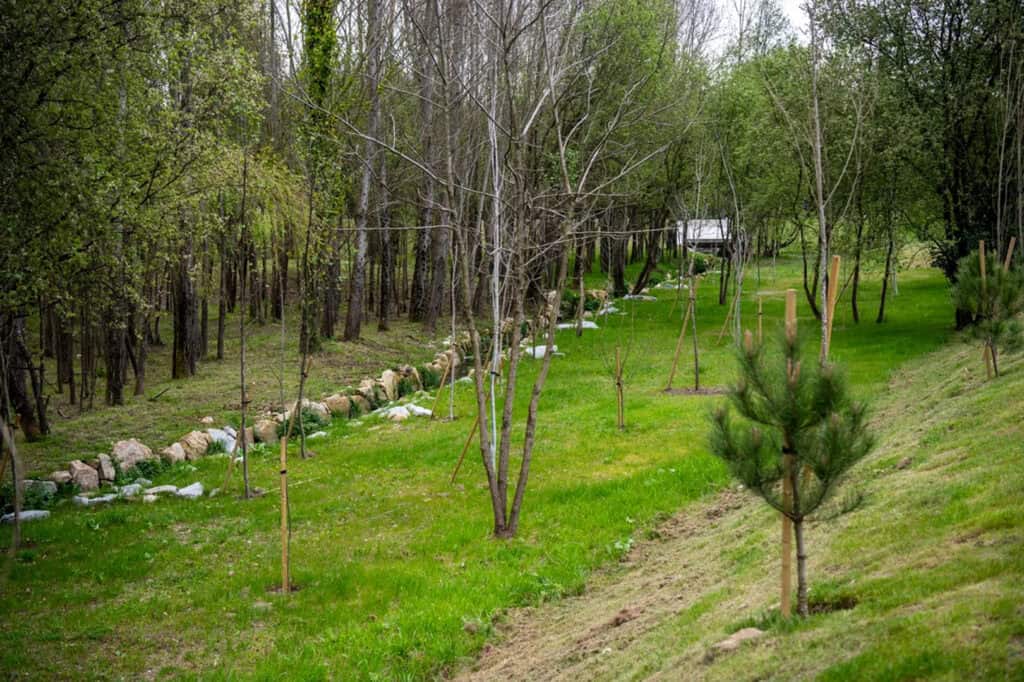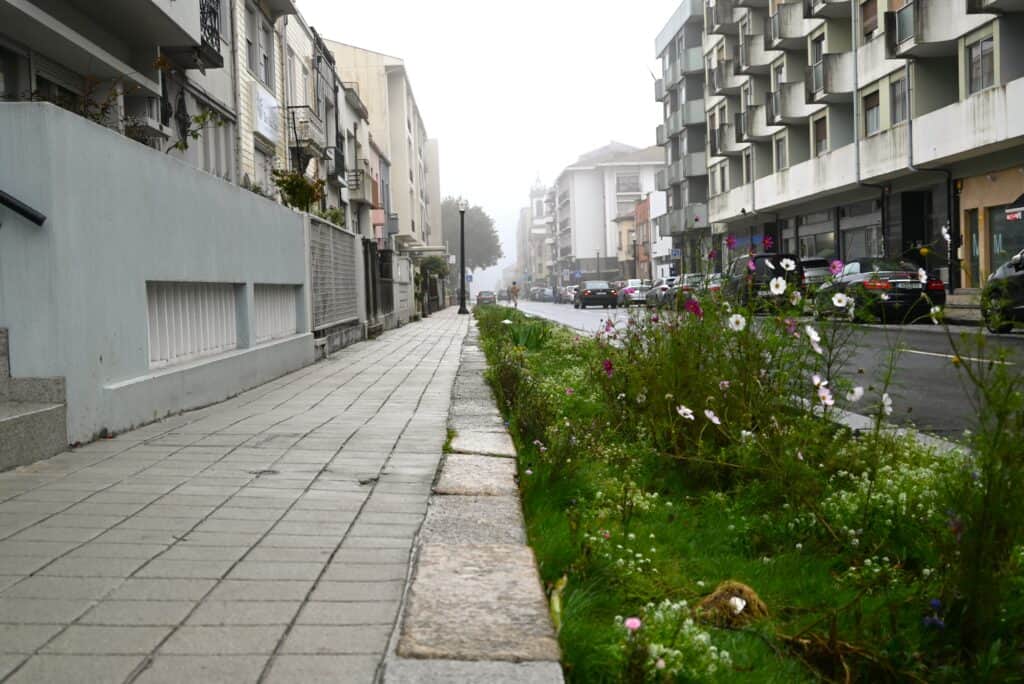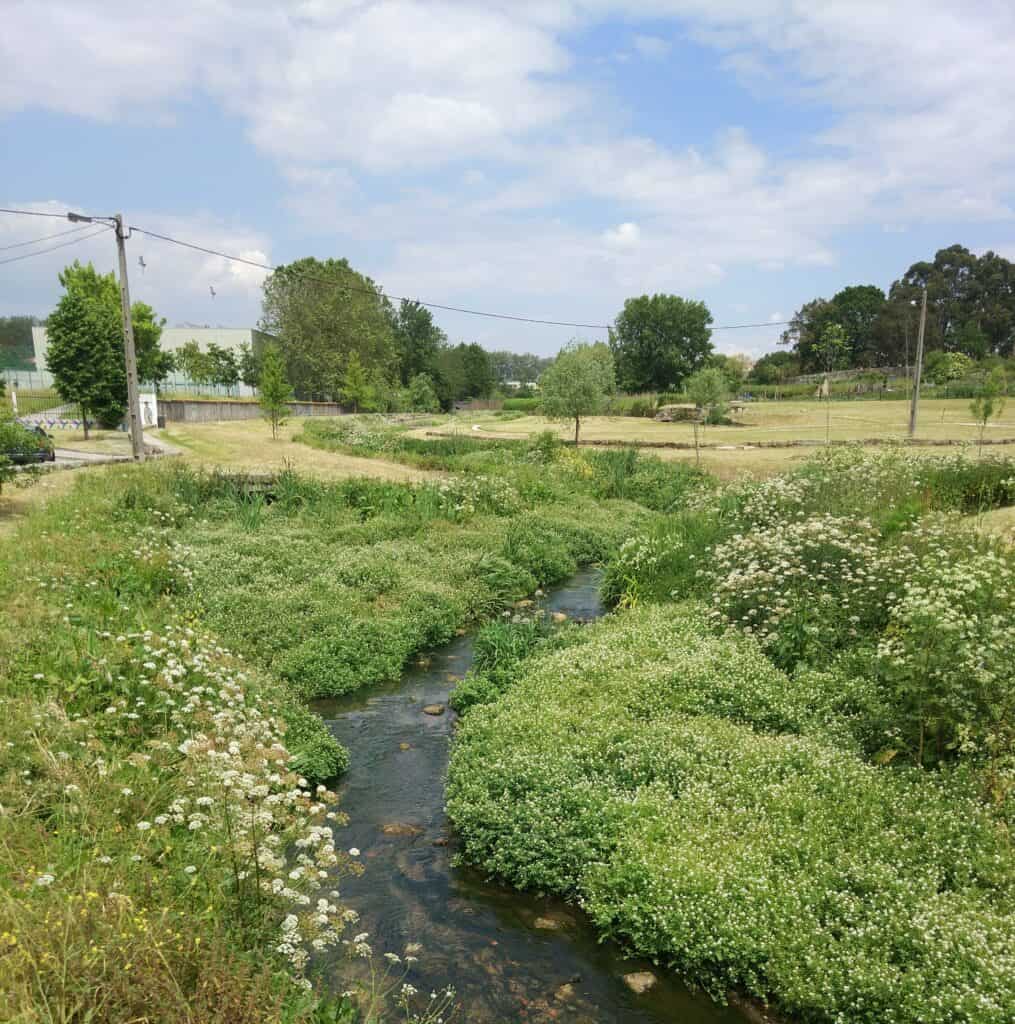The main aim of the Rio Tinto Interconnector project was to improve the river’s water quality, by channelling the treated effluent from the Rio Tinto and Freixo wastewater treatment plants directly into the River Douro, since the Rio Tinto does not have sufficient self-depuration and regeneration capacity for these flows. This project also promoted the rehabilitation of the riverbed and banks using natural engineering techniques and the creation of a linear urban park along its banks.
Rio Tinto Interconnector
Tipology
Aquatic plants
Natural engineering solutions
Phytoremediation
Trees
Address
Parque OrientalRua Conde da Silva Monteiro
Location
Campanhã
Promoter
Águas e Energia do Porto (Water and Energy of Porto)/Municipality of Gondomar
Area
16 hectares
Cost
9.893.759 €
Investment
3.492.288 €
1.768.005 € AEdP investment
1.724.282 € CM Gondomar investment
Presentation
Ecological functions
Erosion control/reduction; improving water quality; improving quality of life; promoting biodiversity; reducing extreme weather events; reducing noise; regulating air quality; regulating temperature; scarbon sequestration;
Sustainable Development Goals
3. Good Health and Well-being; 11. Sustainable cities and communities; 13. Climate action; 15. Life on Land; 17. Partnerships for the goals;
Results
3 km of rehabilitated water line
4.62 km of pedestrian and cycle paths
2,500 new trees
OTHER SUGGESTIONS
The Ribeira da Asprela has been restored in sections with different natural-based solutions: at Outeiro (2009), natural engineering techniques stabilized the bed and banks; at Quinta das Lamas (2015), de-tubing promoted requalification and re-naturalization; and at Parque Central (2022), three retention basins for 10,000 m³ were created.
As part of the street improvement works carried out by the municipal company GOPorto, a Sustainable Urban Drainage System (SUDS) – rain garden – was installed to collect rainwater from the roadway and sidewalk. This green strip improves the well-being and safety of pedestrians, pre-treats the rainwater to be delivered to the Poço das Patas […]
The Ribeira da Granja has been restored using natural solutions: in Viso (2010), natural engineering techniques stabilized the banks; in Quinta do Rio (2011) and SACHE (2014), de-tubing promoted re-naturalization; Ramalde do Meio (2013), re-qualification allowed connection to the city; Requesende (2013), re-qualification promoted environmental preservation.
